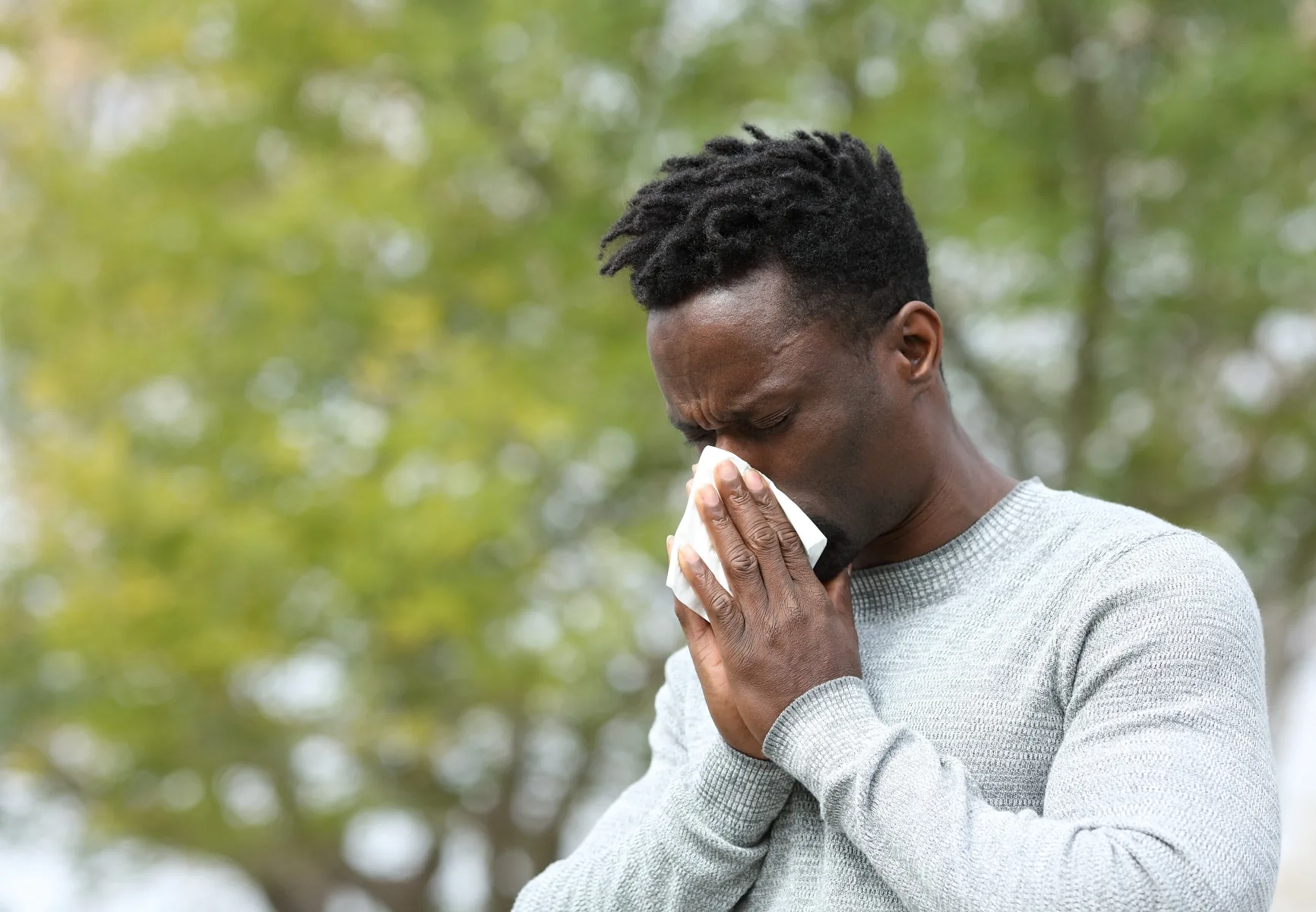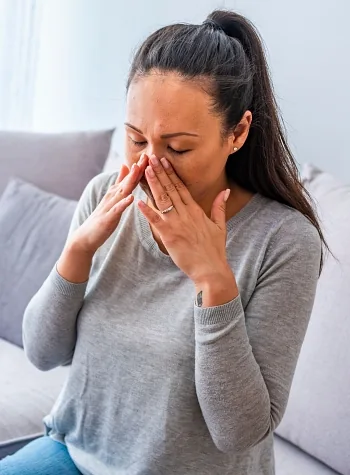Dr. Shawn Allen has either authored or reviewed and approved this content.
Page Updated:Postnasal drip can be uncomfortable and frustrating, and it is a common cause of symptoms such as cough, sore throat, and hoarseness. While many may find relief from postnasal drip symptoms with over-the-counter remedies, postnasal drip that is chronic or long-lasting could be caused by a condition that requires attention from a Board-Certified Otolaryngologist (ENT). Serving patients from Houston, The Woodlands, and surrounding communities, fellowship-trained Rhinologist Dr. Shawn Allen can properly diagnose the cause of postnasal drip and provide effective treatment.

Clear nasal drip, often referred to as postnasal drip, occurs when excessive mucus accumulates in the nose and drips down into the throat. Mucus is a thin or thick substance that is constantly produced in the lining of the nose and throat. Its key functions are to moisten these areas, humidify breathed air, to trap airborne pathogens and debris such as pollen, and to help fight infection. Normally, mucus flows constantly in a thin layer down the back of the throat before being unconsciously swallowed. When excess mucus is produced or mucus is thicker than normal, it can be noticeable and cause throat irritation, throat clearing, cough, and/or a scratchy or hoarse voice. This is postnasal drip.

Common symptoms of postnasal drip include:
Various conditions can cause chronic nasal drip. Common causes of postnasal drip include:
Treatment of clear nasal drip is dependent upon the cause of the condition.
The nasal septum is made up of bone and cartilage with overlying mucosa and divides the two nasal cavities. When the septum is significantly deviated (crooked), Dr. Allen can perform a septoplasty to straighten and correct the shape of the septum restoring normal airflow and function when needed.
Learn More About Septoplasty
Treatment of sinus infections may include decongestants, antihistamines, nasal saline irrigation, steroid nasal sprays, antibiotics, steroids, and other medications. In cases where chronic sinusitis does not respond to medications, Dr. Allen may perform surgery. Surgical treatment of chronic sinusitis may include septoplasty as well as:
During endoscopic sinus surgery, Dr. Allen is able to enlarge the sinus openings, clear nasal obstructions such as polyps, and create a more favorable environment for the application of topical sinus medications.
Learn More About Endoscopic Sinus Surgery
This in-office procedure is performed to dilate the sinuses, allowing Dr. Allen to rinse the sinuses and clear them of debris while improving their drainage and function.
Learn More About In-Office Balloon Sinuplasty
Turbinates are structures inside the nasal passages that serve to cleanse, warm, and humidify air breathed through the nose. When enlarged turbinates cause nasal obstruction or chronic congestion, inferior turbinate reduction (turbinoplasty) can significantly improve nasal airflow.
Learn More About Inferior Turbinate Reduction
In cases where postnasal drip is caused by allergies, treatment may include allergy pills, allergy shots or drops (immunotherapy), antihistamine nasal sprays, decongestants, and/or nasal or oral steroids.
When postnasal drip is caused by a bacterial infection, antibiotics are prescribed. Additional treatment may include saline nasal irrigation, decongestants, and/or nasal spray. Surgery may be required to clear chronic infections when these medical treatments fail.
To diagnose the source of a patient’s postnasal drip, Dr. Allen will perform an examination of the ear, nose, and throat. Nasal endoscopy and CT Imaging may also be utilized to uncover the extent of the problem.
In many cases, relief can be found using over-the-counter and home remedies such as a limited course of decongestants, expectorants such as guaifenesin (to loosen secretions), antihistamines, and nasal irrigation with saline nasal spray, sinus rinse bottle, or a neti pot. Using a humidifier, reducing exposure to allergens, replacing and/or adding HEPA air filters, and aggressive hydration can help further alleviate symptoms of postnasal drip depending upon the underlying cause.
If these treatment options are not successful, or if you develop a fever, wheezing, bloody mucus, or mucus with a foul odor or consistent with infection, schedule a consultation with Dr. Allen. If you experience clear watery drainage that is dependent (worsens when leaning forward) and experience significant headaches, neck stiffness, or lethargy/confusion, this may actually be a CSF leak warranting immediate evaluation in the Emergency Department.
If you suffer postnasal drip connected with allergies, there are a few steps you can take to reduce frequency and the severity of your symptoms:

If you suffer from persistent postnasal drip, Dr. Shawn Allen can diagnose the cause of your condition and provide appropriate treatment. Dr. Allen proudly serves patients from Houston, The Woodlands, and nearby communities. To schedule your consultation with Dr. Allen, please contact us.
1 American Academy of Otolaryngology – Head and Neck Surgery. Post Nasal Drip. Available: https://www.enthealth.org/conditions/post-nasal-drip/. Accessed January 17, 2023.
2 Cleveland Clinic. Postnasal Drip. Available: https://my.clevelandclinic.org/health/diseases/23082-postnasal-drip. Accessed January 17, 2023.
Dr. Shawn Allen has either authored or reviewed and approved this content.
Page Updated: